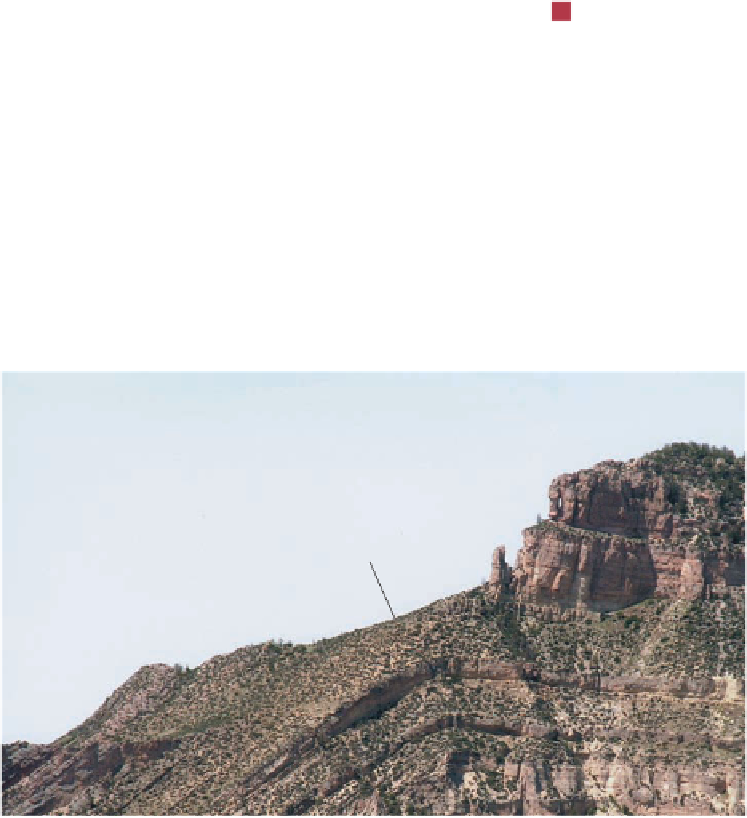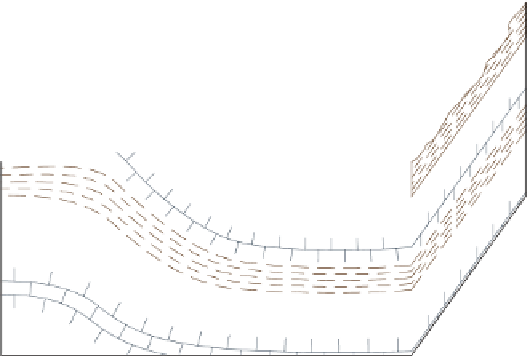Geology Reference
In-Depth Information
◗
Figure 10.6
Monoclines
A monocline. Notice the strike and dip symbol and the circled
cross, which is the symbol for horizontal layers.
a
35
A monocline in the Bighorn
Mountains in Wyoming.
b
Monocline
that have been tipped on their sides or turned completely up-
side down is more diffi cult. Can you determine which of the
two folds shown in Figure 10.11c is an anticline? Even if strike
and dip symbols were shown, you would still not be able to
resolve this question, but knowing the relative ages of the
folded rock layers provides a solution. Remember that an an-
ticline has the oldest rock layers in its core, so the fold nearest
the surface is an anticline and the lower fold is a syncline.
view of the anticline, each limb dips outward or away from
the center of the fold, and the oldest exposed rocks are in
the fold's core. In an eroded syncline, though, each limb dips
inward toward the fold's center, where the youngest exposed
rocks are found.
The folds described so far are
upright
, meaning that their
axial planes are vertical and both fold limbs dip at the same
angle (Figure 10.10). In many folds, the axial plane is not
vertical, the limbs dip at different angles, and the folds are
characterized as
inclined
(
Plunging Folds
To complicate matters further, folds are also
characterized as
nonplunging
or
plunging.
In some folds, the fold
axis, a line formed by the intersection of the axial plane with
the folded layers, is horizontal and the folds are nonplunging
(Figure 10.11b). Much more commonly, though, fold axes are
inclined so that they appear to plunge beneath adjacent rocks,
and the folds are said to be plunging (
Figure 10.11a). If both limbs dip
in the same direction, the fold is
overturned.
That is, one limb
has been rotated more than 90 degrees from its original posi-
tion so that it is now upside down (Figure 10.11b). In some
areas, deformation has been so intense that axial planes of
folds are now horizontal, giving rise to what geologists call
recumbent folds
(Figure 10.11c). Overturned and recumbent
folds are particularly common in mountains resulting from
compression at convergent plate boundaries (discussed later
in this chapter).
For upright folds, the distinction between anticlines and
synclines is straightforward, but interpreting complex folds
◗
Figure 10.12).
It might seem that with this additional complication,
differentiating plunging anticlines from plunging synclines
would be much more diffi cult; however, geologists use exactly
the same criteria that they use for nonplunging folds. There-
fore, all rock layers dip away from the fold axis in plunging
◗




























































































































































































































































































































































































Search WWH ::

Custom Search